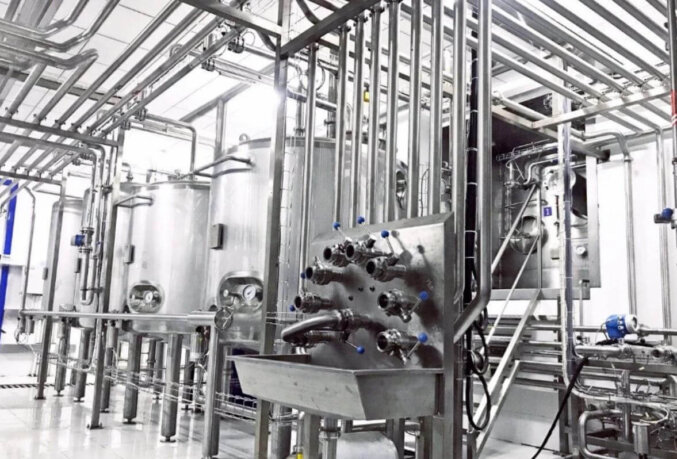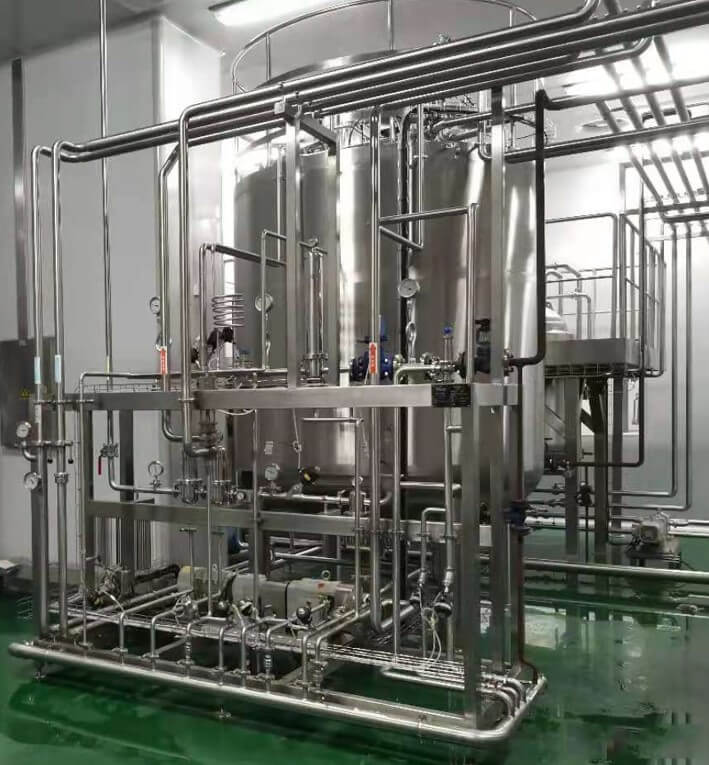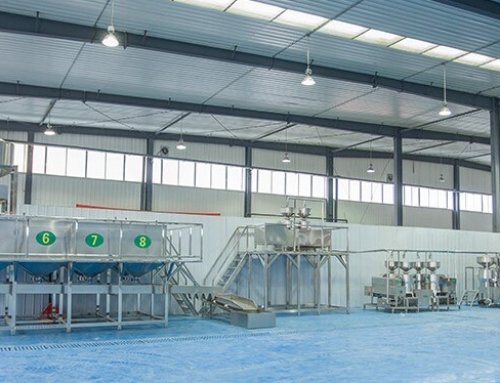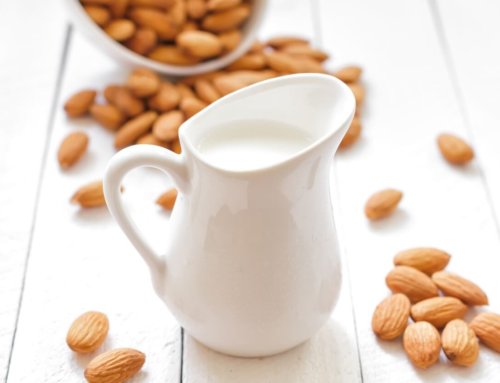Project Description
Oat Milk Processing Line
Oat Milk Processing Line Description
- Oat milk is a plant protein beverage that is a substitute/alternative for animal dairy products, it is becoming more and more popular among young people and beverage consumption trend because of its remarkable superiority. Oat milk is low in overall calories, cholesterol, and saturated fat and high content of protein and fiber than cow milk, which also meets the needs of lactose-intolerant consumers.
- Oat-based milk beverage is made from whole oat groats/rolled oats/oat flour/oat powder. which looks like dairy milk. The main equipment for producing oat milk is oat soaking machine, oat milling machine, oat milk hydrolysis and separating machine, oat milk blending, homogenizing and sterilizing system, oat milk filling and packing system, CIP cleaning system, RO water treatment system.
- In the end products of the oat milk, certain ingredients will be added like pure water, vegetable oil, salt, stabilizers, acids, vitamin and mineral blends, sweeteners, and flavors to make the end product more favorable and higher nutrition.
- The capacity of the oat milk processing line is from 500LPH-10000LPH, and the end product can be filled into bottles, cartons and other consumable packages, the whole processing line is highly flexible and modular, which can meet different technological processes and packages.
- Oat milk production process involves milling oats into oat slurry, adding enzymes to break down the oats into a more soluble form and decompose the starch, filtering the oat slurry to remove insoluble fibers, mixing it with water and flavor agent, homogenizing, pasteurizing/UHT sterilizing, and packaging it into the containers.
- The processing line is equipped with a CIP system, which can ensure the hygiene conditions of the equipment and save labor greatly.
- The oat milk processing plant can also process other similar grains such as quinoa, millet, rice, and chia into milk-based products.
- You can check the FAQ of plant-based milk on this page.
End Products and Package Of Oat Milk Processing Line
Gable top carton oat milk: For this package, the oat milk can be pasteurized and then cold filling into cartons, The shelf life is 5-7 days in the freezer.
Brick carton oat milk: The oat milk after blending with ingredients, then UHT sterilizing and filling into brick cartons. The whole process is aseptic, so the end products can be stored at ambient temperature and the shelf life is 6 months to one year available.
Bottled or canned oat milk: The oat milk will be pasteurized, then hot filling into bottles or cans, after filling, the package needs to do the secondary sterilizing with retort sterilizer or cooling tunnel sterilizer. The shelf life reaches 12 months.

Oat Milk Processing Line Technological Flowchart
When the raw material is raw oat grains or rolled oats: The rolled oats feed into the colloid mill through the screw elevator, at the same time RO water also will be measured into the oat mill, through the colloid mill process, we get the oat slurry. Then the amylase will be added to the oat slurry to break down starch to prevent oat milk gelatinization and thickening at high temperatures in the enzymatic hydrolysis tank. After that, we use one decanter centrifuge separator to extract milk from the oat slurry, the decanter will separate solid and liquid to obtain the oat milk, then add the ingredients one by one to the blending tank according to the formula table. To make more flavor and longer shelf life products, the mixed oat milk will be sent to a homogenizer, degasser and UHT sterilizer for further processing, then the end product will be filled into cartons or bottles for consumption.
When the raw material is oat flour/oat powder: The oat flour/oat powder will be fed into the water powder mixer to dissolve the oat powder into liquid state through circulating with a tank, then the oat slurry will be enzymolysised and separated by centrifuge separator, then it will be pumped into the blending tank, in the blending tank, all the ingredients will be added and mixed evenly according to the recipe, then the oat milk will be homogenized, UHT sterilized and degassed. At last, the oat milk will be filled into containers.

Key Machine Of Oat Milk Processing Line
Rolled oats blanching machine
The oat rolls will be blanched in the hot water to inactivate the enzymes in oats and soften the oat for a higher milling yield rate. The blanching process will be heating the rolled oats to 90℃ and holding for 5 minutes. The blancher can be a SUS304 soaking tank or screw blanching machine.
Rolled oats milling machine
We use the colloid mill or wet-type milling machine to grind the oat into slurry, during the process, the oats will be mixed with water and mill the soft mixture. The colloid mill is made of SUS304 material, and the material processing accuracy can reach 2-50μm. The ratio of pure water to oatmeal is around 3:1 to 5:1, 1000g rolled oats and 3000L water after milling, we can get about 2500L oat slurry.

Oat milk enzyme tanks
The natural amylase starch will be added into the enzymatic hydrolysis tank to decompose the starch into smaller components. The enzyme process not only can improve the yield rate and sensory properties of the oat milk compared to the traditional process, but also it can decrease the viscosity and increase the sweetness of oat slurry.
The oat slurry heating, enzymatic hydrolysis, enzyme inactivating can all be completed in the enzymatic hydrolysis tank. The general enzymatic hydrolysis temperature and time are 55℃ at 4 hours, but this is not absolute, when the temperature increase, the time will decrease; After the enzymatic hydrolysis finish, the oat slurry will be heated to 90℃/60-80S for inactivating amylase, then the oat slurry will be discharged to the tubular cooler to cool down the material from 90℃ to 50-60℃ for decanter centrifuge.
One model process of the enzymatic hydrolysis of oat milk: The dosage of medium temperature amylase is 0.1%, the action temperature is 85℃, and the time is 60 min; the saccharification conditions are: the dosage of compound glucoamylase is 0.09%, and the action time is 70 min. The total solid content of oat milk prepared under this process reached 10.03%, the protein content was 1.37 g/100 mL, the reducing sugar content was 3.09 g/100 mL, the relative viscosity was 3.52, the emulsion particle median diameter was 1.747 μm, and the product viscosity and sweetness moderate, smooth taste, good stability.

Oat milk decanter centrifuge separator
After the oat milk is enzyme treatment, we use the decanter centrifuge separator to ensure optimum clarification performance and a high liquid yield due to the maximum dewatering of solids in the oat milk to get the pure oat milk. The separation temperature is controlled at about 55℃, which can separate oat shells from oat fiber to the greatest extent. Fiber separation, to get rid of insoluble fibers, resulting in an oat base that can be further formulated into specific products.

Oat milk blending tanks
When the oats are mixed with hot water in blending tanks, the starch in the oats starts to gelatinize and swell, and the oat base viscosity will be increased a lot. So when blending, the tank agitator choosing will be a key factor in whether you can produce high-quality of oat milk products. A paddle and scrape combined agitator is recommended, it has the characteristics of scraping, turning and mixing oat slurry, and adjustable speed, which solves the shortcomings of traditional mixing tanks such as poor mixing effect on viscous materials and uneven temperature rise. We will also recommend a high-shear mixer and circulation over blending tanks to increase production efficiency.
We use the blending tanks to add different ingredients, depending on the products we are manufacturing. The main ingredient for oat milk beverage is water, vitamin, oil, stabilizer, gum, sugar, mineral matter and acid. The blending tank is triple layers that can be heated by steam, equipped with an agitator, temperature sensor, level sensor, sample valve and so on. All the ingredients dosing can be precision-controlled by a flowmeter or weight sensor, and a higher configuration production line can be equipped with mix proof valve cluster to guarantee a high hygiene level when processing the products.

Oat milk homogenizing, degassing and sterilizing unit
The homogenizer can crush the fat globules in the oat milk beverage. The homogenization pressure is about 40Mpa, and the product is fully emulsified by two-stage homogenization.
The vacuum degasser can remove the air in the end products to extend the shelf life, the vacuum degree is 70-80kpa.
There are two sterilizing processes for oat milk:
–For bottled and gable cartons of oat milk, we adopt pasteurizing method(85-95℃holding for 15-30S), after filling into the container, the container sterilizing process is a must to make the products have a stable shelf-life;
–For the aseptic brick cartons, the traditional way is indirect tubular UHT treatment(135℃holding for 3-5S), but now the direct DSI(direct steam injection) treatment system is more and more popular for sterilizing the oat milk due to the shorter heating and cooling time (150-160℃ holding for 0.1S), so the end products flavor, nutrition and color is kept maximumly.

Oat milk aseptic tank
Oat milk aseptic tanks are essential for the production and storage of aseptic oat milk. These tanks are designed to maintain the quality and safety of the oat milk during aseptic processing, storage, and transportation. During aseptic carton oat milk processing, it is crucial to prevent the growth of harmful microorganisms that can spoil the product or cause foodborne illness. Aseptic tanks provide a sterile environment that prevents contamination and ensures the freshness and quality of the oat milk.
Aseptic tanks used for oat milk processing are typically made of high-quality stainless steel or other food-grade materials. These tanks are designed to be easy to clean and sanitize, with smooth surfaces that prevent the accumulation of bacteria and other contaminants. Aseptic tanks also feature specialized equipment such as agitators and pumps, which are used to mix and transfer the oat milk during processing. These features help to ensure that the oat milk is uniformly processed and prevents any separation or settling of the product.

Oat milk filling machine
For bottled or canned oat milk, we use a bottle/can washing filling and capping/sealing machine, after the milk is filled into bottles or cans, the secondary sterilizing process(121℃for 15min) is adopted by a retort sterilizer to obtain the stable shelf life of the end products. When the oat milk is filled into the bottles or cans, there are two sterilizing processes (before and after filling), and the filling temperature is also hot filling, so the oat milk flavor or nutrients will be damaged by the heat treatment. When using the oat flour to process oat milk, the bottles/cans package is suggested.
The carton package is the most popular package when processing oat milk products due to its stable shelf life and minimum chemical changes of the end products. The oat milk after UHT sterilization will be filled into aseptic cartons at room temperature. After filling, there is no need for the secondary sterilizing process, and the end product’s shelf life can reach 6-12months.


